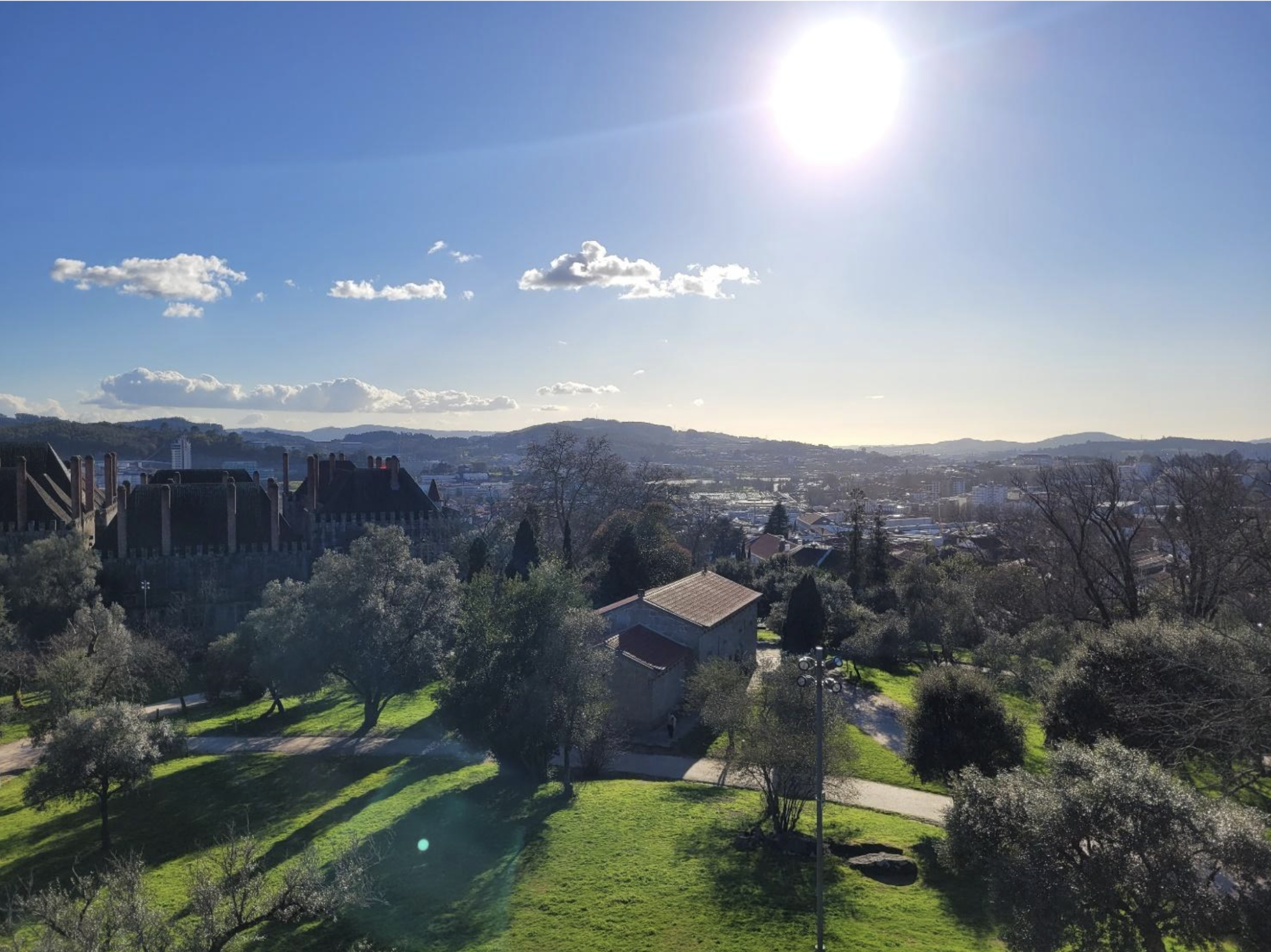Images credit to Amelia Głuszak (the author)
Surrounded by green forests and breathtaking hilly landscapes, Guimarães is located in Northern Portugal, not more than a 2-hour train journey away from Porto. Although many people associate Guimarães with its historic centre, which was declared a UNESCO World Heritage Site in 2001, the city’s broader significance has long gone unnoticed. That changed last year, when its impressive progress in sustainability received well-deserved international recognition. Through its holistic and effective approach, Guimarães demonstrates how climate action and urban development can go hand in hand.
For the past decades, many cities worldwide have taken steps to integrate sustainability into local culture. As many have tried, many have also failed, but Guimarães stands out as a role model. Its approach emphasises the engagement of the private sector, the administration, academia and the local community that can all contribute to the creation of an environment in which human beings, flora and fauna can thrive.
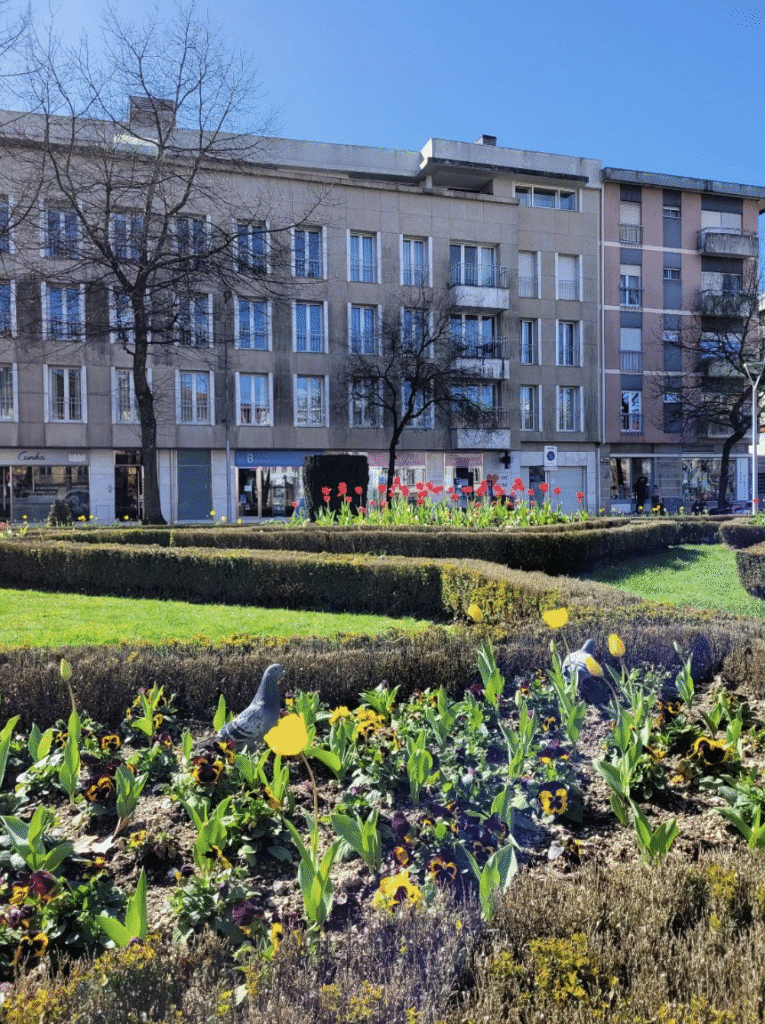
For its efforts, the city has been awarded the title of the European Green Capital of 2026—an award which has been incentivising European cities with a population of above 100,000 inhabitants to commit to climate action since 2010. The results were announced in Valencia, Spain, in November last year. Having won against 20 other European cities, Guimarães will receive a financial prize of €600,000 that will further drive its sustainability efforts.
Even though it was not the first Portuguese city to win this title—Lisbon did so in 2020—it remains a good case study for how cities can merge all their objectives to prevent the depletion of environmental resources. On a broader European level, Guimarães takes an active part in programmes connecting cities from different countries, including the ‘Let’s Clean Europe’ campaign. It is also a signatory of the Green City Accord, which is a network of mayors dedicated to urban sustainable development. In addition, Guimarães is one of the 112 European cities that pledged to achieve climate neutrality by 2030, and is a receiver of the Mission Label from the European Commission, as part of the EU Mission: Climate-Neutral and Smart Cities.
What truly shaped sustainability efforts in Guimarães was the 2030 Governance Ecosystem framework that was put in place in 2013. It embraces a multidisciplinary approach to tackle local ecological issues, attributing equal weight to citizen engagement, research, and environmental education. Under this framework, many smaller initiatives were created, such as the recycling project RRRICICLO, which is responsible for the separation and valuation of organic waste produced by households. In 2022, it covered 34% of the population of the municipality, and the programme is expected to reach the entire population by 2028. Since 2015, the local government has also addressed waste from cigarette butts and chewing gums by introducing a city-wide effort that facilitates the collection and recycling of these materials.
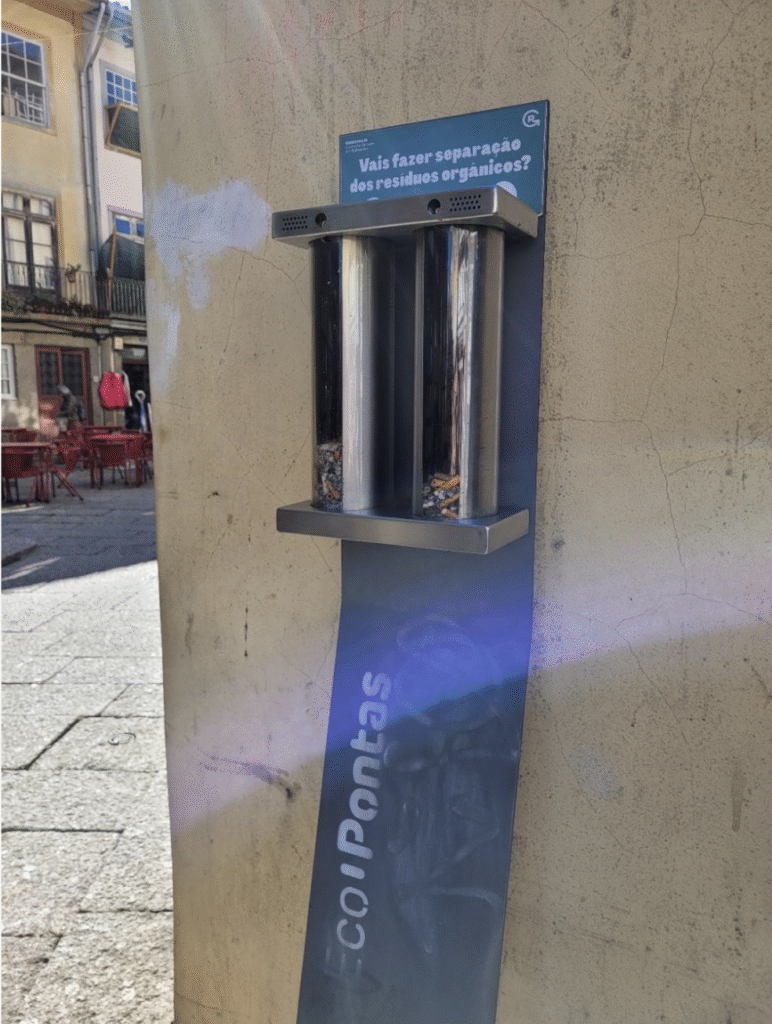
Guimarães’ innovative approach to waste management is also reflected in its Pay-As-You-Throw (PAYT) programme. The PAYT system promotes sustainable urban waste management and paves the way for a transition from a linear to a circular economy model. It was initially launched in 2016 in the city’s historic centre, but since then, it has expanded and now covers over 10,000 users across several neighbourhoods. Residents in these areas are required to use pre-paid bags for mixed waste disposal—the greater the amount of waste, the higher the cost of waste management services. This approach incentivises recycling and waste reduction as recyclable materials are collected free of charge. It has already led to significant environmental benefits, including a 126% increase in recyclable collection and a 34% reduction in mixed waste in the areas where it was implemented.
Another initiative that is worth mentioning is PEGADAS—a city-wide programme dedicated to environmental education in schools, founded in 2015. It was created at the request of the City Council and is now overseen by the Landscape Laboratory, which promotes biodiversity conservation and preservation. Since its launch, the programme has reached as many as 20,000 students who have learnt about ways in which they can take better care of their surroundings.
Sustainable mobility also remains one of the main pillars of Guimarães’ strategy. There are ongoing efforts towards the electrification of public transport.
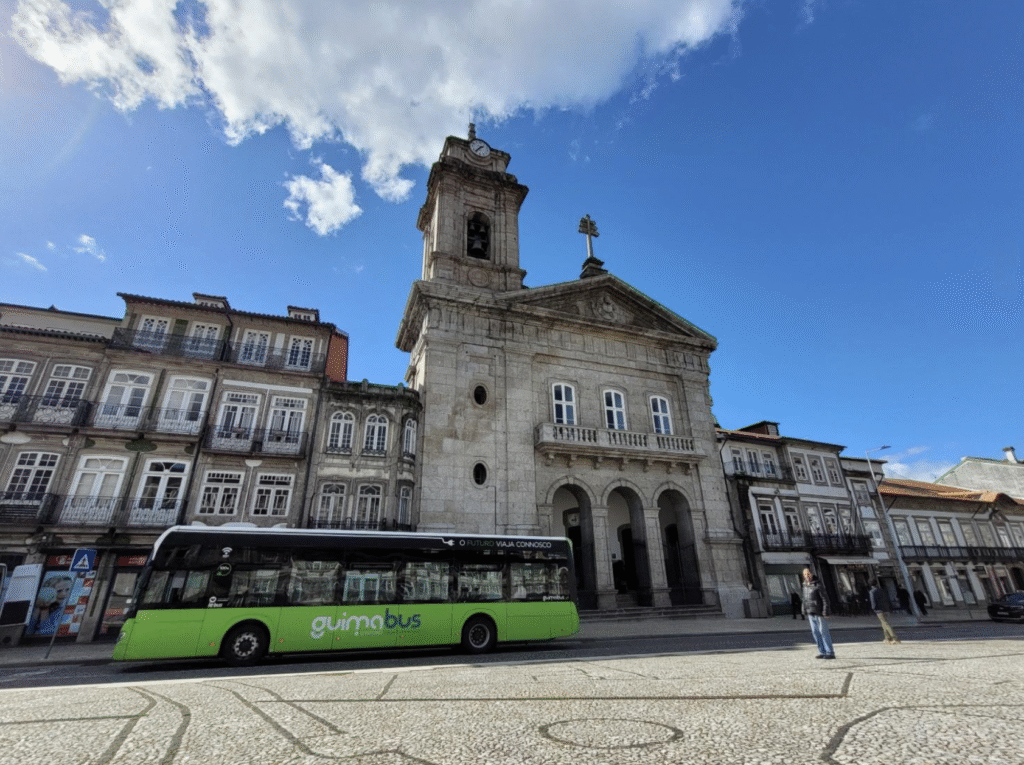
In recent years, the city has significantly developed its bicycle infrastructure. It has committed to creating a regional bicycle network in the near future, as the local government plans ‘to connect Guimarães to the neighbouring towns of Brito, Ronfe, Pevidém, and Caldas das Taipas, along with routes to Penha Mountain and along the picturesque Ave River’. New paths are also aimed at connecting inhabitants to nature. For example, as a result of a recent project that cost the city almost €3 million, people can now enjoy easy access to the slopes of Mesão Frio.
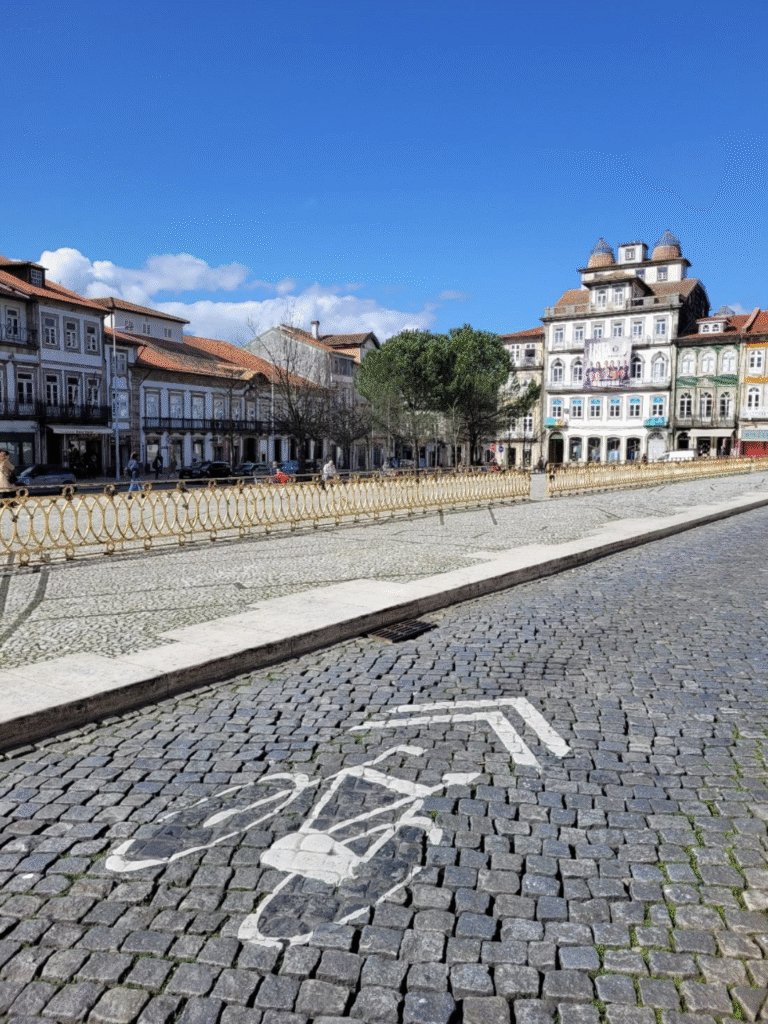
The local government has also tackled the impact of the built environment. A notable example of sustainable architecture, which is highly encouraged and financially supported by the local government, is the Gymnastics Academy of Guimarães. Rainwater harvesting technology was put in place to reduce the demand for fresh surface water and groundwater, which are threatened by climate change; the Academy also utilises water from the river located next to its facilities for cooling systems in summer, while taking advantage of underground air and using it for heating in winter.
An interesting initiative is the ‘Zero Carbon Sports’ programme, which promotes sustainable transformation within the local sports community through the reduction of the carbon footprint of sports clubs and the promotion of eco-conscious practices via training. On a city-wide scale, club-specific environmental assessments and surveys are conducted, after which a given club receives a customised Sustainability Action Plan. The implementation of the Plan is later monitored by a group of researchers appointed by the government, through specialised software and follow-up strategies. Lastly, the effectiveness of recommended measures is assessed. The city also drives sustainability through regulatory measures, such as the Regulation for Granting Support for Sports Associations, which makes financial support conditional and consistent with environmental guidelines and objectives.
Guimarães is committed to continuous progress in the sustainability field, which is particularly important in terms of building the reputation of a ‘One-Planet’ city. Environmental protection plays a pivotal role for the local community, which also widely supports the local government’s efforts to achieve a greater balance between the natural environment and urban development. In a recent survey, residents were asked to assess air quality within the city. An overwhelming majority—97% of respondents—indicated that they are enjoying ‘good’ or ‘very good’ air.
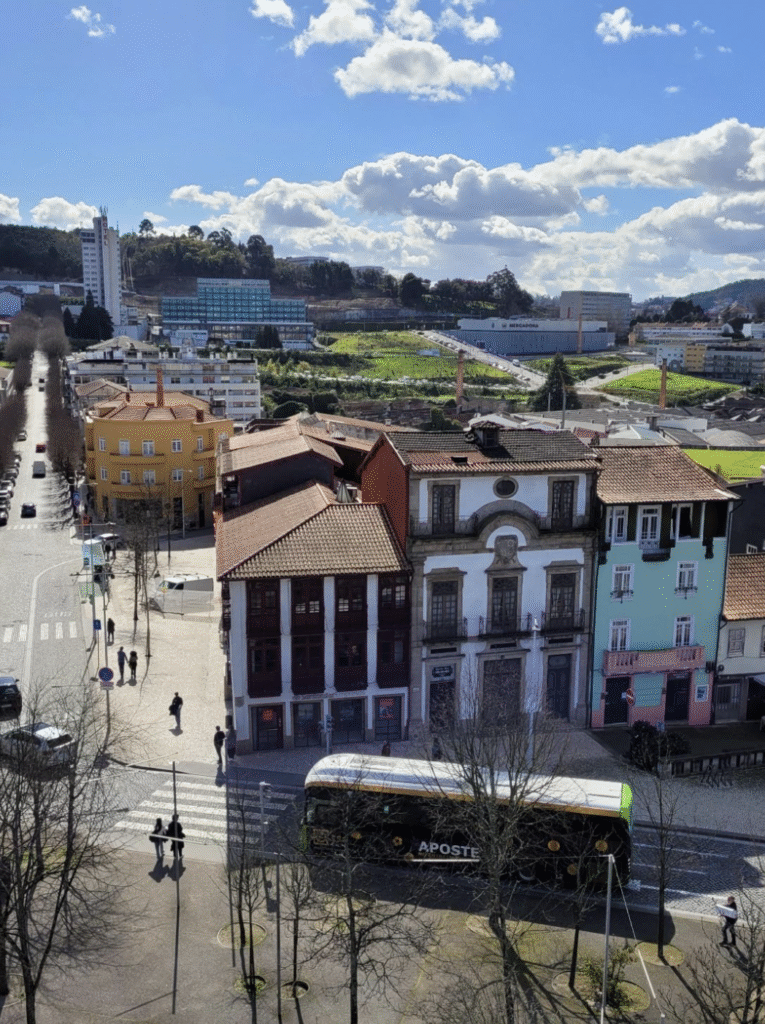
Guimarães stands out as a leading example of how cities can integrate sustainability into their long-term strategy through innovative policies and active citizen engagement. Its significant progress in waste reduction, recycling, mobility, and environmental awareness reflects a successful and holistic approach to urban sustainability—one that can be and should be implemented in cities worldwide that are at the forefront of the climate crisis.
Other posts that may interest you:
Discover more from The Sundial Press
Subscribe to get the latest posts sent to your email.


